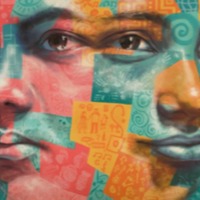
Vanessa
There is an estimated 48,000 people living in modern slavery in Libya (GSI 2018). Libya is a major transit destination for migrants and refugees hoping to reach Europe by sea. Human trafficking networks have prospered amid lawlessness, created by the warring militias that have been fighting for control of territories since the toppling of Muammar Gaddafi in 2011. Highly organized trafficking and migrants smuggling networks that reach into Libya from Niger, Nigeria, Chad, Eritrea, Ethiopia, Somalia, Sudan, and other sub-Saharan states subject migrants to forced labor and forced prostitution through fraudulent recruitment, confiscation of identity and travel documents, withholding or non-payment of wages, debt bondage, and verbal, physical, and sexual abuse. In some cases, migrants reportedly pay smuggling fees to reach Tripoli, but once they cross the Libyan border they are sometimes abandoned in southern cities or the desert where they are susceptible to severe forms of abuse and human trafficking. In Nigeria, Vanessa struggled to house and feed herself and her three children after being thrown out of their home by her abusive husband. She worked as a hawker, selling fruit, and as a hairdresser, but worried constantly about money. Then a friend mentioned a sister in Italy with a hairdressing salon and recommended Vanessa to work there. She was told it would be an easy journey through Libya, however after arriving in Tripoli, Vanessa and her fellow travellers were housed in a smuggler’s compound when a fight broke out among neighbourhood gangs. During this time, her baby developed a fever and became critically ill, dying shortly afterward. She set off from Tripoli on a smuggler’s boat headed for Italy, but the boat was captured by bandits who took them back to Libya and held the passengers for ransom. Vanessa’s friend's sister in Italy paid for her release, but she was unable to make it to Italy. When she tried for a second time, she was caught by the Libyan Coast Guard, brought back, and imprisoned. A Ghanaian man bailed her out of prison only to sell her to a brothel where she had to work as a prostitute to pay off her debt.
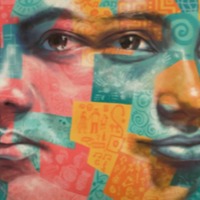
Jasmine
There are an estimated 403,000 people living in modern slavery in the United States (GSI 2018). Sex trafficking exists throughout the country. Traffickers use violence, threats, lies, debt bondage and other forms of coercion to compel adults and children to engage in commercial sex acts against their will. The situations that sex trafficking victims face vary, many victims become romantically involved with someone who then forces them into prostitution. Others are lured with false promises of a job, and some are forced to sell sex by members of their own families. Victims of sex trafficking include both foreign nationals and US citizens, with women making up the majority of those trafficked for the purposes of commercial sexual exploitation. In 2015, the most reported venues/industries for sex trafficking included commercial-front brothels, hotel/motel-based trafficking, online advertisements with unknown locations, residential brothels, and street-based sex trafficking. Jasmine was trafficked at the age of 18 in Connecticut, USA. She grew up in Saugus and Revere, where she started dating a man who coerced her into sex trafficking.
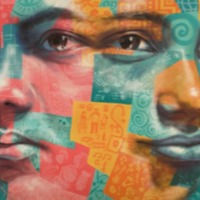
Hannah
There are an estimated 403,000 people living in conditions of modern slavery in the United States (GSI 2018). The US attracts migrants and refugees who are particularly at risk of vulnerability to human trafficking. Trafficking victims often responding to fraudulent offers of employment in the US migrate willingly and are subsequently subjected to conditions of involuntary servitude in industries such as forced labour and commercial sexual exploitation. Hannah experienced the world of sexual exploitation and forced labour when her foster parents adopted her at the age of 12, in Texas, USA.
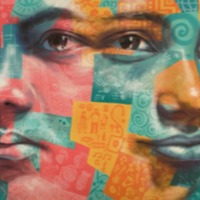
Rayana
There are an estimated 794,000 people living in conditions of modern slavery in Russia (GSI 2018). Forced labour remains the predominant form of human trafficking in the country. Labour trafficking has been reported in the construction, manufacturing, logging, textile, and maritime industries, as well as in sawmills, agriculture, sheep farms, grocery and retail shops, restaurants, waste sorting, street sweeping, domestic service, and forced begging. Many migrant workers experience exploitative labour conditions characteristic of trafficking cases, such as withholding of identity documents, non-payment for services rendered, physical abuse, lack of safety measures, or extremely poor living conditions. Rayana*, an 18-year old woman from Kazakhstan, was trafficked to Russia after a man offered her work near Moscow. But when she arrived, she was forced to work in a shop with two other girls. Rayanna was subjected to physical and sexual violence. She finally escaped one night by clinging to the back of a lorry.
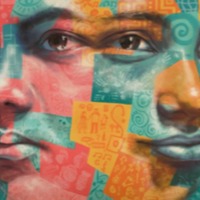
Aisuluu
There are an estimated 24,000 people living in modern slavery in Kyrgyzstan (GSI 2018). The country remains a source, transit and destination country for men, women and children subjected to forced labour and sex trafficking. Women in the country are often subject to kidnapping and forced marriage, known as Ala kachuu. The act was outlawed in the country in 2013 when authorities recognised it could lead to marital rape, domestic violence and psychological trauma. However, in some communities the practice remains common. Aisuluu experienced Ala kachuu (bride kidnapping) when she was seventeen years old. She was held in a house by her kidnappers for two months before she was forcibly married and experience violence for a further two years. Aisuluu tells of the difficulties of surviving bride kidnapping and being treated as a second-class citizen.
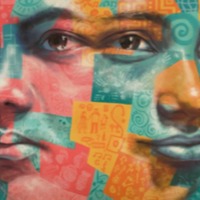
Y
There are an estimated 136,000 people living on conditions of modern slavery in the United Kingdom (Global Slavery Index 2018). According to the 2017 annual figures provided by the National Crime Agency, 5, 145 potential victims of modern slavery were referred through the National Referral Mechanism in 2017, of whom 2,454 were female, 2688 were male and 3 were transgender, with 41% of all referrals being children at the time of exploitation. People are subjected to slavery in the UK in the form of domestic servitude, labour exploitation, organ harvesting and sexual exploitation, with the largest number of potential victims originating from Albania, China, Vietnam and Nigeria. This data however does not consider the unknown numbers of victims that are not reported. Y was trafficked from Nigeria to the United Kingdom at five years old. She was forced to clean, prevented from leaving the house or going to school and made to look after the family’s baby. Y was physically, emotionally and mentally abused by the family that had bought her. When she was 11, the family moved back to Nigeria and sold Y to their friend. She remained in the UK and was forced to work long hours doing housework. When she was 14, she was also forced to make cakes for the woman to sell and make money. She finally ran away and went to live with a foster family while the police and social services worked on her case.
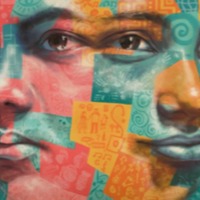
Matthew Dixon
There are an estimated 133,000 people living in modern slavery in Ghana (GSI 2018). Ghana remains a source, transit, and destination country for men, women, and children subjected to forced labour and sex trafficking. Ghanaian boys and girls are subjected to forced labor within the country in fishing, domestic service, street hawking, begging, portering, artisanal gold mining, quarrying, herding, and agriculture, including cocoa. Research focused on the fishing industry on Lake Volta indicated that more than half of the children working on and around the lake were born in other communities and many of these children are subjected to forced labor; not allowed to attend school; given inadequate housing and clothing; and are controlled by fishermen through intimidation, violence, and limiting access to food. Boys as young as five years old are forced to work in hazardous conditions, including deep diving, and many suffer waterborne infections. A study of the prevalence of child trafficking in selected communities in the Volta and Central Regions indicated that children from nearly one-third of the 1,621 households surveyed had been subjected to trafficking, primarily in fishing and domestic servitude. Matthew was trafficked into fishing on Lake Volta, Ghana after he left school to help support his family. The trafficker promised his mother monthly payment in exchange for Matthew’s labour. He was forced to work long hours in dangerous conditions under the threat of violence. After attending workshops on child trafficking Matthew’s mother realised what she had done and organised his release. Matthew is now back at school.
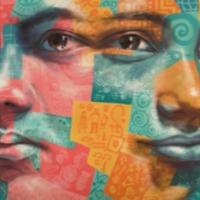
Aja
There are an estimated 17,000 people living in modern slavery in Jordan (GSI 2018). Jordan is a source, transit and destination country for adults and children subjected to forced labour, domestic servitude and sex trafficking. People are trafficked primarily from South and Southeast Asia, East Africa, Egypt and Syria. Forced labour victims experience withheld or non-payment wages, confiscation of identity documents, restricted freedom of movement, unsafe living conditions, long hours without rest, isolation, and verbal and physical abuse. Jordan relies on foreign migrant workers – many of whom are undocumented – in several sectors, including construction, agriculture, textiles, and domestic work. Aja* travelled to Jordan for work after the death of her husband. After six months her wages were withheld and she was subjected to physical abuse by her employer.
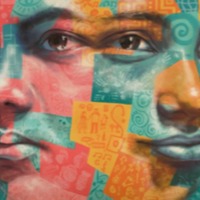
Esosa
There are an estimated 1,386,000 people living in modern slavery in Nigeria (GSI 2018). Nigeria is a source, transit, and destination country for women and children subjected to forced labour and sex trafficking, and a source country for men subjected to forced labour. Women and girls are victims of forced labour in domestic service both within the country as well as being trafficked to other West and Central African countries. Esosa experienced trafficking and domestic servitude in Nigeria. She was then able to return to school and went on to study theatre arts at university. She is now a professional dancer and performer. Esosa supports anti-trafficking efforts in her community, including through NGO Y, by choreographing performances to raise awareness of the dangers of irregular migration.

Tina
There are an estimated 136,000 people living on conditions of modern slavery in the United Kingdom (Global Slavery Index 2018). According to the 2017 annual figures provided by the National Crime Agency, 5, 145 potential victims of modern slavery were referred through the National Referral Mechanism in 2017, of whom 2,454 were female, 2688 were male and 3 were transgender, with 41% of all referrals being children at the time of exploitation. People are subjected to slavery in the UK in the form of domestic servitude, labour exploitation, organ harvesting and sexual exploitation, with the largest number of potential victims originating from Albania, China, Vietnam and Nigeria. This data however does not consider the unknown numbers of victims that are not reported. Tina is from India but travelled to the UK where she was forced to marry a man she did not know. She was abused by both him and his family. She became pregnant and worried for her child. She escaped from her abusers and was referred to Black Country Women's Aid who supported her in their refuge. There she lived alongside other women and children who had escaped abuse.
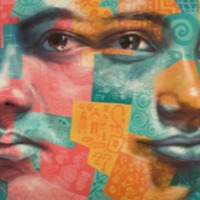
Nancy
There are an estimated 403,000 people living in modern slavery in the United States (GSI 2018). Sex trafficking exists throughout the country. Traffickers use violence, threats, lies, debt bondage and other forms of coercion to compel adults and children to engage in commercial sex acts against their will. The situations that sex trafficking victims face vary, many victims become romantically involved with someone who then forces them into prostitution. Others are lured with false promises of a job, and some are forced to sell sex by members of their own families. Victims of sex trafficking include both foreign nationals and US citizens, with women making up the majority of those trafficked for the purposes of commercial sexual exploitation. In 2015, the most reported venues/industries for sex trafficking included commercial-front brothels, hotel/motel-based trafficking, online advertisements with unknown locations, residential brothels, and street-based sex trafficking. Nancy was trafficked into prostitution, subjected to sexual abuse and violence daily. Nancy stresses the importance of education and raising awareness for both the prevention of commercial sexual exploitation and understanding how to support survivors. She highlights the need for survivors be supported by police rather than interrogated for information and have access to wider networks of support.
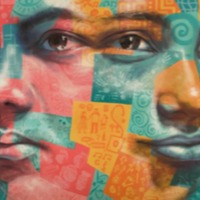
Francis Bok (Narrative 2)
There are an estimated 465,000 people living in modern slavery in Sudan (GSI 2018). Traffickers exploit foreign and domestic victims in the country. Migrant children from West and Central Africa are exploited in forced labour for begging, public transportation, large markets and sex trafficking. Business owners, informal mining operators, community members and farmers exploit children working in brick making factories, goldmining, collective medical waste, street vending and agriculture. Children are exposed to threats, physical and sexual abuse, as well as hazardous working conditions and limited access to education or health services. At the age of four Francis Bok was kidnapped from a local market in South Sudan and forced into domestic slavery in northern Sudan. For 10 years he was forced to work long hours with no rest, treated like an animal by the family he worked for. Bok tried to escape twice before was finally being successful, reaching a refugee camp in Egypt. After a while in the camp he was able to get refugee status in the United States. In 2011 Francis Bok returned to South Sudan and works as a public relations manager at a construction company.

Shamere McKenzie (Narrative 2)
There are an estimated 403,000 people living in modern slavery in the United States (GSI 2018). Sex trafficking exists throughout the country. Traffickers use violence, threats, lies, debt bondage and other forms of coercion to compel adults and children to engage in commercial sex acts against their will. The situations that sex trafficking victims face vary, many victims become romantically involved with someone who then forces them into prostitution. Others are lured with false promises of a job, and some are forced to sell sex by members of their own families. Victims of sex trafficking include both foreign nationals and US citizens, with women making up the majority of those trafficked for the purposes of commercial sexual exploitation. In 2015, the most reported venues/industries for sex trafficking included commercial-front brothels, hotel/motel-based trafficking, online advertisements with unknown locations, residential brothels, and street-based sex trafficking. Shamere McKenzie came to the US from Jamaica when she was 6 years old. A talented track star, she was running at college level when she injured her hamstring. With her scholarship in jeopardy, she met someone who said they could help her return to school, all she had to do was dance at his nightclub. One evening, however, Shamere was taken to a house in Brooklyn where she was told to have sex with a customer. When she refused, her trafficker threatened her life, and when she tried to leave when they returned home he beat her to unconsciousness. For eighteen months Shamere McKenzie was forced in to prostitution and trafficked across five different states under constant threats of violence. She finally escaped when her trafficker allowed her to call her mother and she was able to get a flight back to New York.
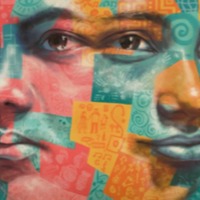
Joanna
There are an estimated 403,000 people living in modern slavery in the United States (GSI 2018). Sex trafficking exists throughout the country. Traffickers use violence, threats, lies, debt bondage and other forms of coercion to compel adults and children to engage in commercial sex acts against their will. The situations that sex trafficking victims face vary, many victims become romantically involved with someone who then forces them into prostitution. Others are lured with false promises of a job, and some are forced to sell sex by members of their own families. Victims of sex trafficking include both foreign nationals and US citizens, with women making up the majority of those trafficked for the purposes of commercial sexual exploitation. In 2015, the most reported venues/industries for sex trafficking included commercial-front brothels, hotel/motel-based trafficking, online advertisements with unknown locations, residential brothels, and street-based sex trafficking. Joanna was born in a small town in Europe/ When she was 18 she met a man who said he wanted to marry her. They began seeing each other and Joanna became pregnant. Her boyfriend took Joanna to the United States where their child was born. Unable to read, Joanna was told to sign a piece of paper at the hospital and never saw her child again. She was taken to an apartment building where other young girls like her were being kept. Joanna was forced to provide sexual services, raped multiple times a day. She was finally able to escape one day when she became ill.
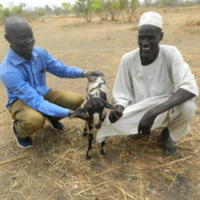
Kiir Uchan Majok
There are an estimated 465,000 people living in modern slavery in Sudan (GSI 2018). Between 1983 and 2005, the central government of Sudan enslaved tens of thousands of black South Sudanese Christian and traditionalist people. It was part of a genocidal war against South Sudan, with a simple aim: to force South Sudan to become Arab and Muslim. Kiir Uchan Majok was captured by Muslim’s and enslaved in Sudan, forced to work on a farm under the threat of constant violence.
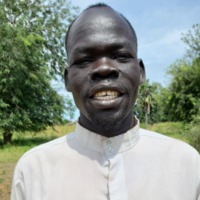
Makuom Mawein Tong
There are an estimated 465,000 people living in modern slavery in Sudan (GSI 2018). Between 1983 and 2005, the central government of Sudan enslaved tens of thousands of black South Sudanese Christian and traditionalist people. It was part of a genocidal war against South Sudan, with a simple aim: to force South Sudan to become Arab and Muslim. Makuom was born in Akoch Atong Mabil village, north of Aweil town. As a young boy in 1980s his father enrolled him in a school near his village, but a few days later, news was everywhere that Arabs were planning to attack Dinka tribe villages. His father pulled him from school and kept him at home because he was so afraid of Arab attack. At night during the dry season, Arabs attacked his village. Makuom ran and hid in a nearby forest. Many people from his village ran to the forest, but Arabs followed them. His father was killed by Arabs and captured him with others. All children who were captured were forced to walk with Arabs to north Sudan.
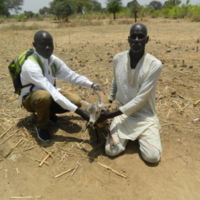
Kolong Guot Mayuol
There are an estimated 465,000 people living in modern slavery in Sudan (GSI 2018). Between 1983 and 2005, the central government of Sudan enslaved tens of thousands of black South Sudanese Christian and traditionalist people. It was part of a genocidal war against South Sudan, with a simple aim: to force South Sudan to become Arab and Muslim. Kolong Guot Mayuol was abducted in 1992, taken to northern Sudan and forced to work in a cattle camp.
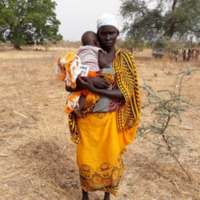
Abuk Akot Wol
There are an estimated 465,000 people living in modern slavery in Sudan (GSI 2018). Between 1983 and 2005, the central government of Sudan enslaved tens of thousands of black South Sudanese Christian and traditionalist people. It was part of a genocidal war against South Sudan, with a simple aim: to force South Sudan to become Arab and Muslim. Abuk Akot Wol was kidnapped one morning and taken to northern Sudan. She tells of her experience.
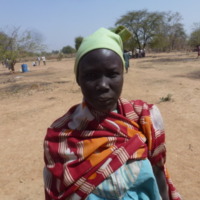
Titleeng Deng Chan
There are an estimated 465,000 people living in modern slavery in Sudan (GSI 2018). Between 1983 and 2005, the central government of Sudan enslaved tens of thousands of black South Sudanese Christian and traditionalist people. It was part of a genocidal war against South Sudan, with a simple aim: to force South Sudan to become Arab and Muslim. Titleeng Deng Chan was captured in 2000 and forced to walk to North Sudan, raped by four men on the way and given to her ‘master’ upon arrival. She was finally liberated in 2016 after meeting with a slave retriever.
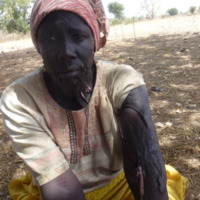
Alom Kuol Koor
There are an estimated 465,000 people living in modern slavery in Sudan (GSI 2018). Between 1983 and 2005, the central government of Sudan enslaved tens of thousands of black South Sudanese Christian and traditionalist people. It was part of a genocidal war against South Sudan, with a simple aim: to force South Sudan to become Arab and Muslim. Alom Kuol Koor was captured in 1998 and forced to walk to north Sudan. Upon arrival he was given to her ‘master’ and forced into domestic servitude. He was finally liberated in 2016 when he escaped and met with a slave retriever in a neighbouring village.